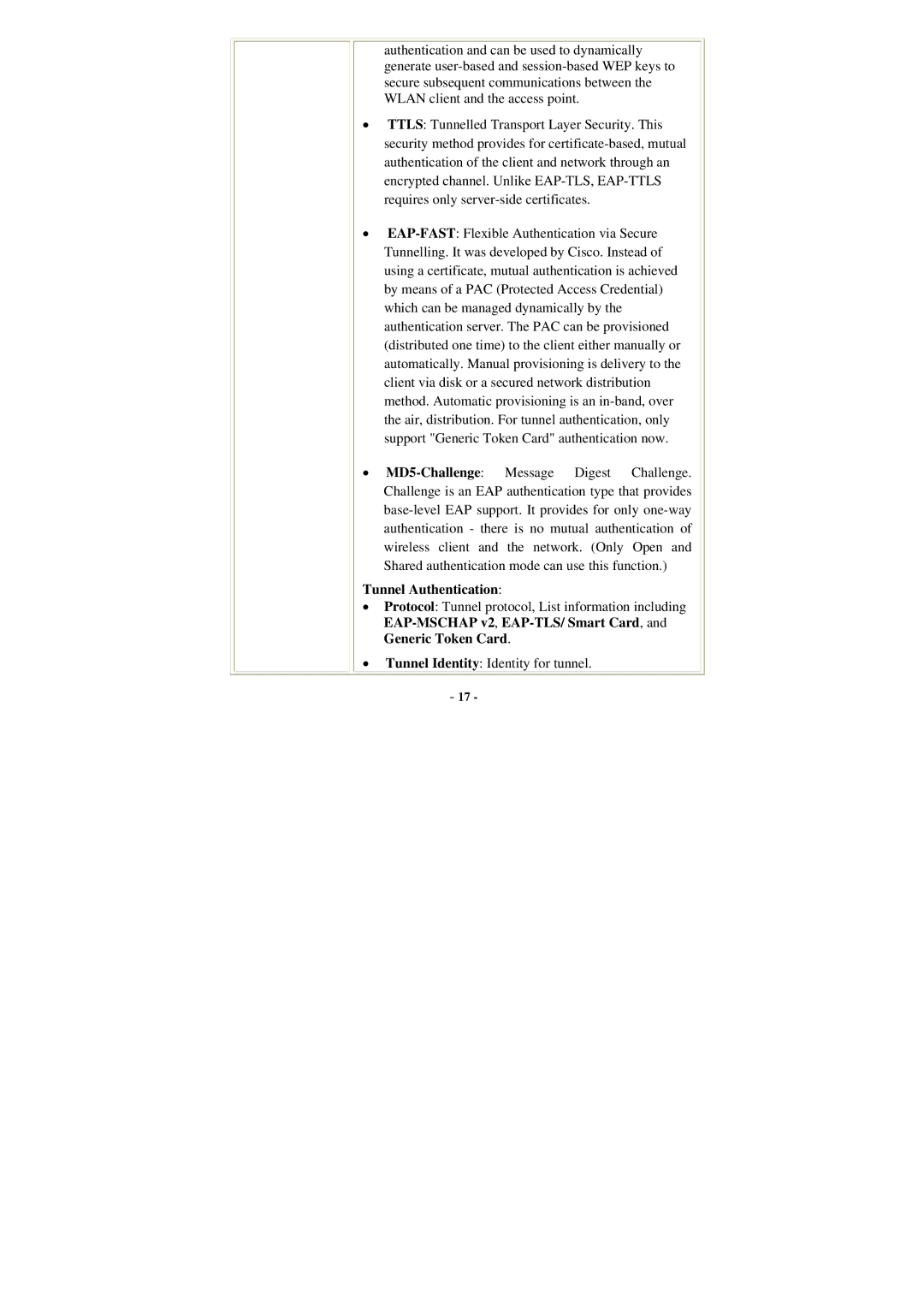authentication and can be used to dynamically generate user-based and session-based WEP keys to secure subsequent communications between the WLAN client and the access point.
•TTLS: Tunnelled Transport Layer Security. This security method provides for certificate-based, mutual authentication of the client and network through an encrypted channel. Unlike EAP-TLS, EAP-TTLS requires only server-side certificates.
•EAP-FAST: Flexible Authentication via Secure Tunnelling. It was developed by Cisco. Instead of using a certificate, mutual authentication is achieved by means of a PAC (Protected Access Credential) which can be managed dynamically by the authentication server. The PAC can be provisioned (distributed one time) to the client either manually or automatically. Manual provisioning is delivery to the client via disk or a secured network distribution method. Automatic provisioning is an in-band, over the air, distribution. For tunnel authentication, only support "Generic Token Card" authentication now.
•MD5-Challenge: Message Digest Challenge. Challenge is an EAP authentication type that provides base-level EAP support. It provides for only one-way authentication - there is no mutual authentication of wireless client and the network. (Only Open and Shared authentication mode can use this function.)
Tunnel Authentication:
•Protocol: Tunnel protocol, List information including EAP-MSCHAP v2, EAP-TLS/ Smart Card, and Generic Token Card.
•Tunnel Identity: Identity for tunnel.
-17 -

